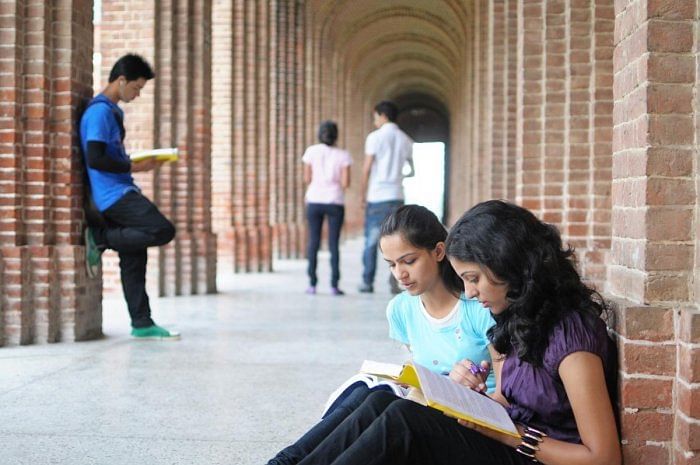
The idea of letting foreign universities establish campuses in India was floated back in 1995 and was subsequently renewed in 2003 and 2010. However, it fizzled out due to a lack of support from members of Parliament.
In consonance with the recommendation of NEP-20 on the internationalisation of Indian higher education, the University Grants Commission (UGC) has recently finalised the ‘Regulations 2023’ on the modalities of the implementation of the proposal within a defined legislative framework.
Meanwhile, it is learned that an Australian institution - Diaken University - has already obtained the green signal from the UGC to open its campus at the Gujarat International Finance Tech City in Gandhinagar, Gujarat.
Also Read | Why the public university matters in India
Historically speaking, in our ancient universities of Takshashila (700-400 BCE) and Nalanda (400-1200 CE), reports have it that there were international students from China, Indonesia, Korea, Japan, Turkey, Afghanistan and Persia (Iran) for higher learning in astronomy, mathematics, philosophy, religion, medicine and other subjects. Hence, our stream of higher education has been accessible to international participation since centuries.
The current UGC move to invite foreign universities to operate in India has generated a great deal of debate, controversy, conflict and confusion about the desirability or otherwise of the proposal and its repercussions. This article attempts an analysis of the implications of the said scheme without bias and prejudice.
Positive outcomes
The policy, in terms of its objectives, is expected to provide greater opportunities to some, if not all, Indian students for quality higher and professional education, research (doctoral and postdoctoral) and gainful employment.
Presumably, it will elicit increased competition among our desi (native) universities to improve quality and excellence through concerted efforts to retain bright students and competent faculty.
Established and recognised foreign higher education institutions (FHEIs) with global benchmarks in terms of quality could act as role models to some of our progressive and promising higher education institutions (HEIs) such as those recognised as centres of national importance, excellence and eminence.
Aspiring, ambitious and wealthy Indian students could obtain foreign degrees by staying in the home country. Past surveys indicated that job prospects and earning potential (return on investments) are much higher in case of foreign degree holders compared to their Indian counterparts.
The new outreach programme is likely to save more than $18 billion in foreign exchange per year. It is estimated that Indian students would be spending nearly $80 billion on overseas education per year by 2024-25.
Adding international flavour to our higher education system will facilitate cross-cultural milieu in classrooms and hostels paving the way for the spirit of universal brotherhood, so instrumental for promoting cooperation, collaboration of academic pursuits. Moreover, universalism in learning exemplifies our legacy of sharing knowledge as was practiced in our ancient universities of Takshashila, Nalanda and others.
However, there are negative outcomes. The venture will usher in a new elite category of higher education within the existing system, again leaving out the poor and the marginalised. Creating dual playing fields with different sets of regulations – one for HEIs and the other to FHEIs – is unreasonable, unfair and unjustifiable.
It should also be noted that not all foreign universities have a global reputation. While well-recognised universities may not be keen to come, entry of tier II and III FHEIs is unlikely to make a significant impact on the quality of education imparted. Other adverse outcomes include:
Foreign university managers are very shrewd edupreneurs (entrepreneurs in education). They are more interested in reaping monetary benefit than vitalising Indian higher education.
Higher education is not a commodity to be imported. Hence, the present proposal is antagonistic to the much-talked-about doctrine of ‘Aatmanirbhar’.
Our universities – already bereft of competent faculty and scholarly students – are likely to suffer more when foreign universities lure them with better perks and prospects.
There are multiple agencies like Quacquarelli-Symonds, Times Higher Education, and Shanghai University involved in global ranking of universities. If institutions in the top 500 list are to be considered for formal approval, then which adjudication process has to be relied upon? Secondly, evaluation is undertaken both institution-wise and programme-wise; which criterion should be adopted?
Apart from inviting the best 500 of FHEIs, the UGC Regulations also permit institutions of repute in their home countries. However, the term ‘repute’ needs clarification in terms of global recognition.
Acquisition of a big chunk of land entails prolonged legal battle in India, and hence it is not clear as to how fast FHEIs are going to set up campuses without litigation.
It is quite uncertain how some of the courses and programmes offered by the foreign universities are going to be in sync with Indian ethos of morality, decency, culture and tradition.
It is unclear how FHIEs are going to react to UGC stipulations of periodic reviews and monitoring of their functioning.
The UGC initiatives to internationalise our higher education sound progressive and appear to be in tandem with the contemporary concept of globalisation. However, we need not be very anxious about the entry of foreign universities. Now that the doors are open, it is for them to decide.
Notwithstanding the UGC’s lofty moves, it should be well within our means and deeds to revitalise higher and professional education. In this direction, a two-step action plan will be rewarding.
One, significantly enhance funding for substantial rejuvenation of teaching and research in our central as well as state universities. Second, motivate some of our best universities with credible ranking and accreditation to opt for greater diversification in cutting edge areas through effective short-term and long-term collaboration with globally recognised foreign universities.
The latter strategy might yield better results than the establishment of foreign university campuses, which entails problems that are difficult to deal with.
(The author is a former Vice Chancellor, University of Mysore)